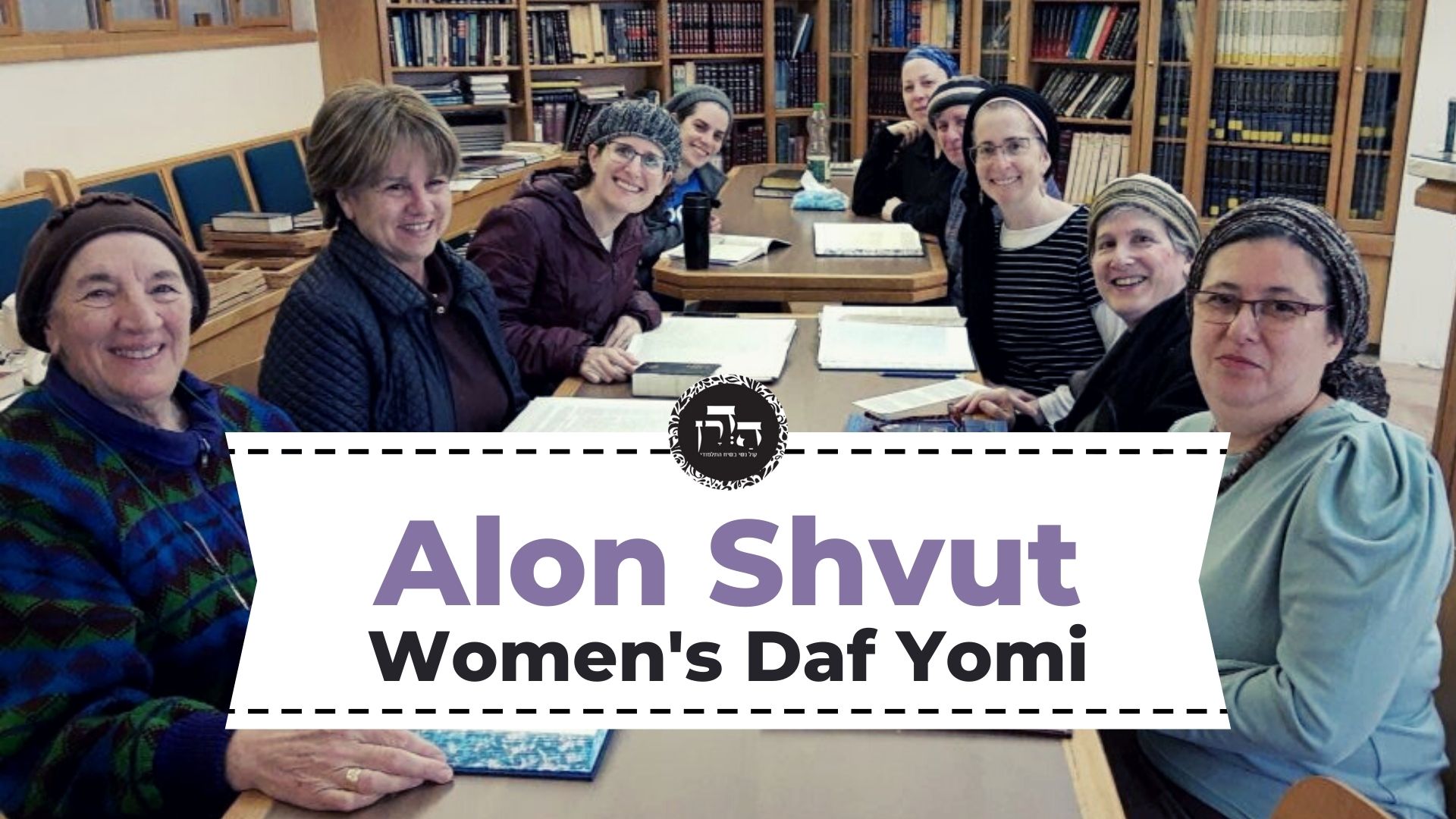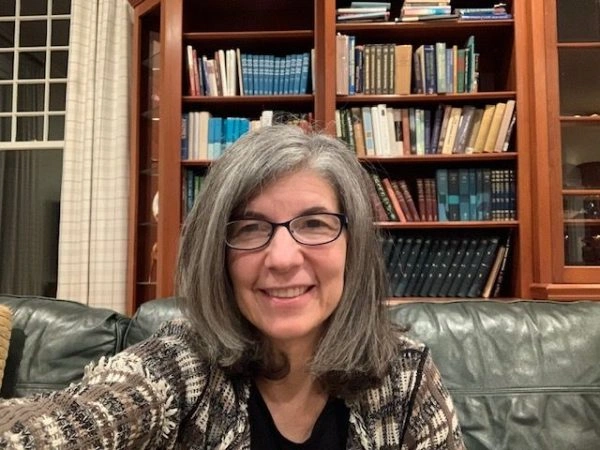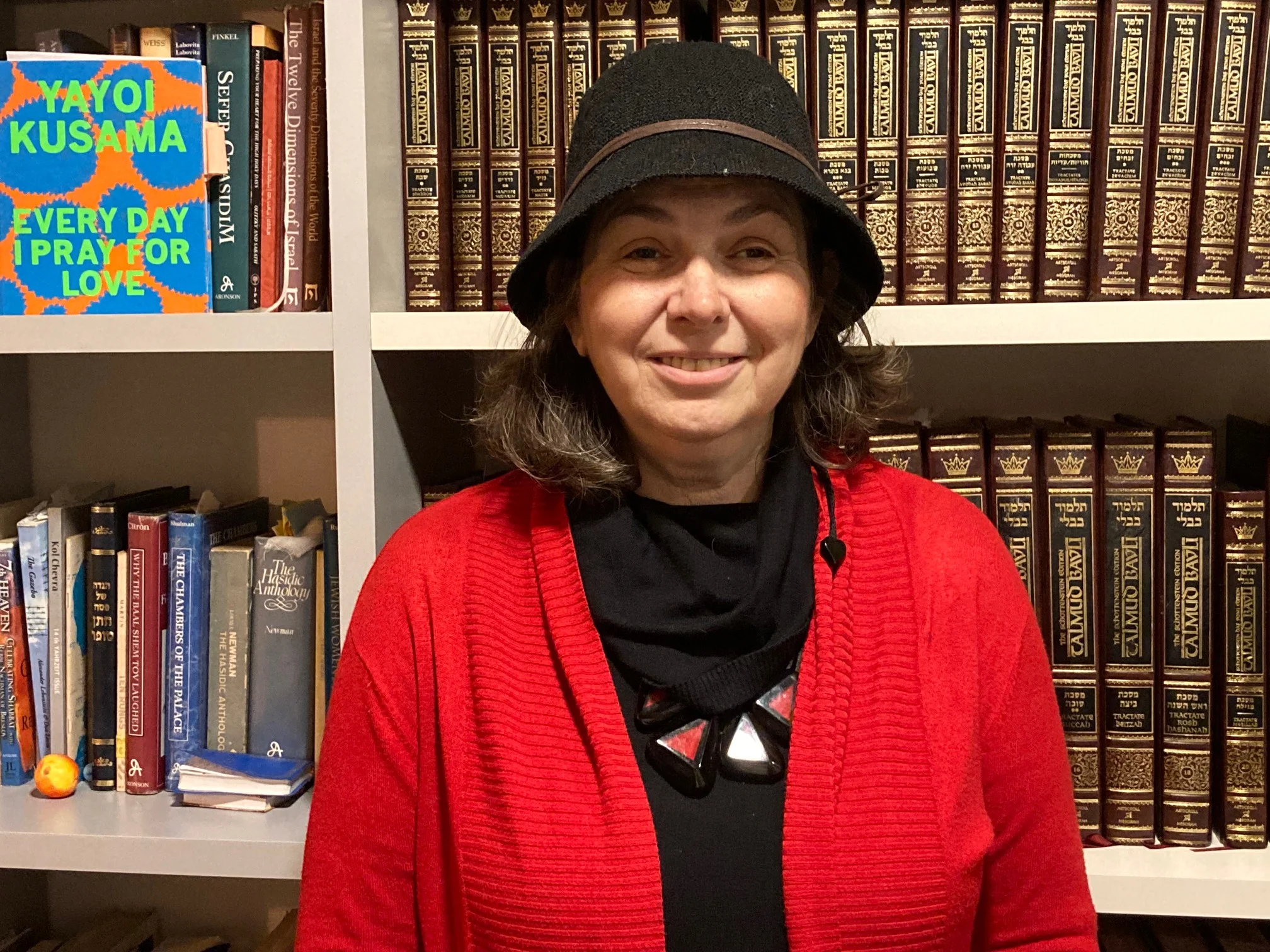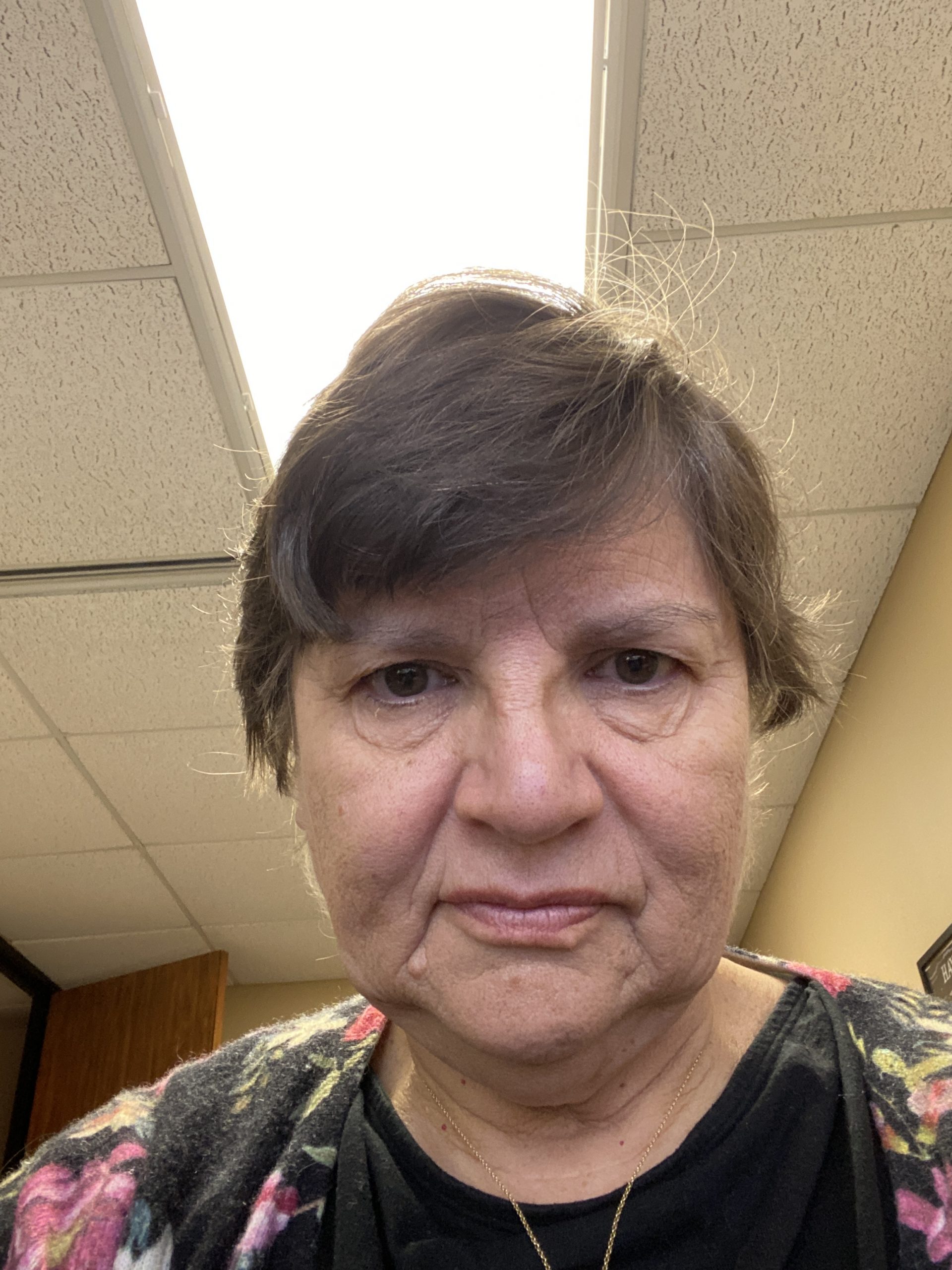Eruvin 91
קַרְפֵּיפוֹת רְשׁוּת לְעַצְמָן. לְדִבְרֵי חֲכָמִים: גַּגִּין וַחֲצֵירוֹת רְשׁוּת אַחַת, קַרְפֵּיפוֹת רְשׁוּת אַחַת הֵן. לְדִבְרֵי רַבִּי שִׁמְעוֹן: כּוּלָּן רְשׁוּת אַחַת הֵן.
Similarly, enclosures are a domain in and of themselves, and one is therefore permitted to carry from one enclosure to another. According to the statement of the Rabbis, roofs and courtyards constitute one domain, and therefore, one may carry even from a roof to a courtyard; however, enclosures are one discrete domain. According to the statement of Rabbi Shimon, all of them, roofs, courtyards, and enclosures, are one domain, and therefore it is permitted to carry between any of them.
תַּנְיָא כְּווֹתֵיהּ דְּרַב, תַּנְיָא כְּווֹתֵיהּ דְּרַב יְהוּדָה. תַּנְיָא כְּווֹתֵיהּ דְּרַב: כׇּל גַּגּוֹת הָעִיר רְשׁוּת אַחַת הֵן, וְאָסוּר לְהַעֲלוֹת וּלְהוֹרִיד מִן הַגַּגִּין לֶחָצֵר וּמִן הֶחָצֵר לְגַגִּין. וְכֵלִים שֶׁשָּׁבְתוּ בֶּחָצֵר — מוּתָּר לְטַלְטְלָן בֶּחָצֵר, בַּגַּגִּין — מוּתָּר לְטַלְטְלָן בַּגַּגִּין, וּבִלְבַד שֶׁלֹּא יְהֵא גַּג גָּבוֹהַּ עֲשָׂרָה אוֹ נָמוּךְ עֲשָׂרָה, דִּבְרֵי רַבִּי מֵאִיר. וַחֲכָמִים אוֹמְרִים: כׇּל אֶחָד וְאֶחָד רְשׁוּת לְעַצְמוֹ, וְאֵין מְטַלְטְלִין בּוֹ אֶלָּא בְּאַרְבַּע.
The Gemara comments: A baraita was taught in accordance with the opinion of Rav, and a baraita was taught in accordance with the opinion of Rav Yehuda. The Gemara elaborates. A baraita was taught in accordance with the opinion of Rav, that according to the Rabbis one may carry only four cubits on each roof: All the roofs of a city are one domain, and it is prohibited to carry objects up or carry them down, from the roofs to the courtyard or from the courtyard to the roofs. And with regard to vessels that were inside a courtyard when Shabbat began, it is permitted to carry them in the courtyard even if an eiruv was not established, and it is likewise permitted to carry them from that courtyard to other courtyards. With regard to vessels that were on the roofs when Shabbat began, it is permitted to carry them on the roofs, provided that one roof is neither ten handbreadths higher nor ten handbreadths lower than the other. This is the statement of Rabbi Meir. And the Rabbis say: Each and every one of the roofs is a domain in and of itself, and one may move objects on each roof only within four cubits.
תַּנְיָא כְּווֹתֵיהּ דְּרַב יְהוּדָה: אָמַר רַבִּי, כְּשֶׁהָיִינוּ לוֹמְדִים תּוֹרָה אֵצֶל רַבִּי שִׁמְעוֹן בִּתְקוֹעַ, הָיִינוּ מַעֲלִין שֶׁמֶן וַאֲלוּנְטִית מִגַּג לְגַג, וּמִגַּג לְחָצֵר, וּמֵחָצֵר לְחָצֵר, וּמֵחָצֵר לְקַרְפֵּף, וּמִקַּרְפֵּף לְקַרְפֵּף אַחֵר, עַד שֶׁהָיִינוּ מַגִּיעִין אֵצֶל הַמַּעְיָין שֶׁהָיִינוּ רוֹחֲצִין בּוֹ.
Likewise, a baraita was taught in accordance with Rav Yehuda’s interpretation of the opinion of Rabbi Shimon. Rabbi Yehuda HaNasi said: When we were studying Torah with Rabbi Shimon in Tekoa, we would carry oil for smearing and a towel for drying from roof to roof, and from roof to courtyard, and from courtyard to courtyard, and from courtyard to enclosure, and from enclosure to enclosure, to refrain from carrying in a prohibited place, until we reached the spring in which we would bathe.
אָמַר רַבִּי יְהוּדָה: מַעֲשֶׂה בִּשְׁעַת הַסַּכָּנָה וְהָיִינוּ מַעֲלִין תּוֹרָה מֵחָצֵר לְגַג, וּמִגַּג לְחָצֵר, וּמֵחָצֵר לְקַרְפֵּף לִקְרוֹת בּוֹ.
And similarly, Rabbi Yehuda said: There was an incident during a time of danger, when decrees were issued that banned religious observance, and we would carry a Torah scroll from courtyard to roof, and from roof to courtyard, and from courtyard to enclosure, to read from it.
אָמְרוּ לוֹ: אֵין שְׁעַת הַסַּכָּנָה רְאָיָה.
The Sages said to him: The halakha cannot be determined from that incident, as an incident occurring during a time of danger is no proof. At a time of danger it is permitted to carry even in places where carrying is ordinarily prohibited by rabbinic law.
רַבִּי שִׁמְעוֹן אוֹמֵר: אֶחָד גַּגִּין וְכוּ׳.
Rabbi Shimon says: Roofs, courtyards, and enclosures are all one domain with regard to vessels that were inside them when Shabbat began, and one may therefore carry from one of these areas to the other. However, they are not one domain with regard to vessels that were inside the house when Shabbat began.
אָמַר רַב: הֲלָכָה כְּרַבִּי שִׁמְעוֹן, וְהוּא שֶׁלֹּא עֵירְבוּ. אֲבָל עֵירְבוּ — לָא, דְּגָזְרִינַן דִּילְמָא אָתֵי לְאַפּוֹקֵי מָאנֵי דְבָתִּים לֶחָצֵר.
Rav said: The halakha is in accordance with the opinion of Rabbi Shimon, provided that the residents of each courtyard did not establish a separate eiruv for themselves, as in that case they may not move objects from their houses into the courtyard. However, if they established a separate eiruv for each courtyard, without establishing an eiruv between the various courtyards, no, that is not the halakha, as we issue a decree lest one come to take out vessels from one of the houses to the courtyard, an action that is fundamentally permitted, and subsequently proceed to carry them out to a different courtyard with which an eiruv had not been established, which everyone agrees is prohibited.
וּשְׁמוּאֵל אָמַר: בֵּין עֵירְבוּ בֵּין שֶׁלֹּא עֵירְבוּ. וְכֵן אָמַר רַבִּי יוֹחָנָן: מִי לְחָשְׁךָ, בֵּין עֵירְבוּ וּבֵין שֶׁלֹּא עֵירְבוּ?
And Shmuel said: The halakha is in accordance with Rabbi Shimon, whether they established an eiruv or whether they did not establish an eiruv. And similarly, Rabbi Yoḥanan said: Who whispered to you, who told you that there is a difference whether they established an eiruv or whether they did not establish an eiruv?
מַתְקֵיף לַהּ רַב חִסְדָּא: לִשְׁמוּאֵל וּלְרַבִּי יוֹחָנָן, יֹאמְרוּ: שְׁנֵי כֵלִים בְּחָצֵר אַחַת, זֶה מוּתָּר וְזֶה אָסוּר!
Rav Ḥisda strongly objects to this ruling. According to Shmuel and according to Rabbi Yoḥanan, people will say with regard to two vessels located in the same courtyard, one of which was in the courtyard when Shabbat began while the other was in the house, that moving this one, which was in the courtyard at the start of Shabbat, to another courtyard is permitted, while moving that one, which was in the house at the start of Shabbat, to another courtyard, is prohibited.
רַבִּי שִׁמְעוֹן לְטַעְמֵיהּ, דְּלָא גָּזַר. דִּתְנַן, אָמַר רַבִּי שִׁמְעוֹן: לְמָה הַדָּבָר דּוֹמֶה, לְשָׁלֹשׁ חֲצֵירוֹת הַפְּתוּחוֹת זוֹ לָזוֹ וּפְתוּחוֹת לִרְשׁוּת הָרַבִּים, וְעֵירְבוּ שְׁתֵּי הַחִיצוֹנוֹת עִם הָאֶמְצָעִית — הִיא מוּתֶּרֶת עִמָּהֶן, וְהֵן מוּתָּרוֹת עִמָּהּ, וּשְׁתֵּי הַחִיצוֹנוֹת אֲסוּרִין זוֹ עִם זוֹ.
The Gemara answers: In this regard, Rabbi Shimon conforms to his standard reasoning, as he did not issue a decree due to these concerns. As we learned in a mishna, Rabbi Shimon said: To what is this matter comparable? It is comparable to three courtyards that are open into each other, and that are also open into a public domain. If the two outer courtyards each established an eiruv with the middle one, it is permitted for the residents of the middle one to carry into the two outer ones, and they, the residents of the two outer ones, are permitted to carry into it, but for the residents of the two outer courtyards it is prohibited to carry into each other, as they did not establish an eiruv together.
וְלָא גָּזַר דִּילְמָא אָתֵי לְאַפּוֹקֵי מָאנֵי דְּהָא חָצֵר לְהָא חָצֵר, הָכִי נָמֵי לָא גָּזְרִינַן דִּילְמָא אָתֵי לְאַפּוֹקֵי מָאנֵי דְבָתִּים לְחָצֵר.
And in that case Rabbi Shimon did not issue a decree prohibiting one to carry objects from the middle courtyard to one of the outer ones lest one come to take out vessels from this outer courtyard to that outer courtyard, despite the fact that both sets of vessels are located in the middle courtyard. Here too, we do not issue a decree lest one come to take out utensils from one of the houses to the courtyard, and carry them to a different courtyard.
מֵתִיב רַב שֵׁשֶׁת: רַבִּי שִׁמְעוֹן אוֹמֵר, אֶחָד גַּגּוֹת אֶחָד חֲצֵירוֹת וְאֶחָד קַרְפֵּיפוֹת רְשׁוּת אַחַת הֵן לְכֵלִים שֶׁשָּׁבְתוּ בְּתוֹכָן, וְלֹא לְכֵלִים שֶׁשָּׁבְתוּ בְּתוֹךְ הַבַּיִת. אִי אָמְרַתְּ בִּשְׁלָמָא דְּעֵירְבוּ — הַיְינוּ דְּמַשְׁכַּחַתְּ לַהּ מָאנֵי דְבָתִּים בְּחָצֵר.
Rav Sheshet raised an objection. We learned in the mishna that Rabbi Shimon says: Roofs, courtyards, and enclosures are all one domain with regard to vessels that were inside them when Shabbat began. But they are not one domain with regard to vessels that were inside the house when Shabbat began. Granted, if you say that it is dealing with a case where the residents of the courtyards established an eiruv, that is how you find vessels that were taken from the house in the courtyard. Because those vessels were in the house at the beginning of Shabbat, they may not be moved to a different courtyard.
אֶלָּא אִי אָמְרַתְּ בְּשֶׁלֹּא עֵירְבוּ — הֵיכִי מַשְׁכַּחַתְּ לַהּ מָאנֵי דְבָתִּים בְּחָצֵר? הוּא מוֹתֵיב לַהּ וְהוּא מְפָרֵק לַהּ: בְּכוּמְתָּא וְסוּדָרָא.
However, if you say it is referring to a case where they did not establish an eiruv, under what circumstances can the case of vessels from the house in the courtyard be found? This poses a difficulty for Rav. Rav Sheshet raised the objection, and he resolved it: It refers to the case of a hat or a shawl, which one wore in the house and subsequently went out to the courtyard and placed it there. In this manner, it is possible that objects taken from the house can be found in the courtyard, even if an eiruv was not established.
תָּא שְׁמַע: אַנְשֵׁי חָצֵר וְאַנְשֵׁי מִרְפֶּסֶת שֶׁשָּׁכְחוּ וְלֹא עֵירְבוּ, כׇּל שֶׁגָּבוֹהַּ עֲשָׂרָה טְפָחִים — לַמִּרְפֶּסֶת. פָּחוֹת מִכָּאן — לֶחָצֵר. בַּמֶּה דְּבָרִים אֲמוּרִים — שֶׁהָיוּ אֵלּוּ שֶׁל רַבִּים וְאֵלּוּ שֶׁל רַבִּים, וְעֵירְבוּ אֵלּוּ לְעַצְמָן וְאֵלּוּ לְעַצְמָן. אוֹ שֶׁל יְחִידִים שֶׁאֵין צְרִיכִין לְעָרֵב.
Come and hear proof from a baraita: With regard to the residents of houses that open directly into a courtyard and the residents of upper stories that open onto a balcony from which stairs lead down to that courtyard, who forgot and did not establish an eiruv between them, anything ten handbreadths high in the courtyard, e.g., a mound or a pillar, is attributed to the balcony in terms of its use on Shabbat. The residents of the balcony may move objects between the mound or pillar and their apartments. Anything lower than that is attributed to the courtyard. In what case is this statement, that it is prohibited for the residents of the courtyard to carry to the balcony and vice versa, stated? It is in a case where the residents of the courtyard were many, and the residents of the balcony were many, and these established an eiruv for themselves, and those established an eiruv for themselves; or if the courtyard and the balcony were occupied by individuals who need not establish an eiruv for themselves.
אֲבָל הָיוּ שֶׁל רַבִּים, וְשָׁכְחוּ וְלֹא עֵירְבוּ — גַּג וְחָצֵר וְאַכְסַדְרָה וּמִרְפֶּסֶת כּוּלָּן רְשׁוּת אַחַת הֵן.
However, if the residents of the courtyard and the balcony were many, and they forgot and did not establish an eiruv for their courtyard or balcony, in that case roof, and courtyard, and portico, and balcony are all one domain, and it is permitted to carry from one to another any vessels that were located in any one of them when Shabbat began.
טַעְמָא דְּלֹא עֵירְבוּ, הָא עֵירְבוּ לָא! הָא מַנִּי — רַבָּנַן הִיא.
The Gemara infers: The reason that carrying between them is permitted is that they did not each establish their own eiruv; however, if they each established their own eiruv, no, it is prohibited to carry between them. This inference supports Rav and poses a difficulty for Shmuel. The Gemara answers: Whose opinion is represented by this baraita? It is that of the Rabbis, who maintain that roofs and courtyards form a single domain, contrary to the opinion of Rabbi Shimon. The Rabbis indeed issued a decree that carrying is prohibited if each group established a separate eiruv.
דַּיְקָא נָמֵי, דְּלָא קָתָנֵי קַרְפֵּף וּמָבוֹי. שְׁמַע מִינַּהּ.
The Gemara comments: The language of the baraita is also precise, as it is not teaching the cases of an enclosure and an alleyway, in accordance with the opinion of Rabbi Shimon, but only the cases of a roof and a courtyard, in accordance with the opinion of the Rabbis. The Gemara concludes: Indeed, learn from here that this is the correct understanding.
תָּא שְׁמַע: חָמֵשׁ חֲצֵירוֹת הַפְּתוּחוֹת זוֹ לָזוֹ וּפְתוּחוֹת לְמָבוֹי, וְשָׁכְחוּ כּוּלָּם וְלֹא עֵירְבוּ — אָסוּר לְהַכְנִיס וּלְהוֹצִיא מֵחָצֵר לַמָּבוֹי וּמִן הַמָּבוֹי לֶחָצֵר. וְכֵלִים שֶׁשָּׁבְתוּ בֶּחָצֵר — מוּתָּר לְטַלְטְלָן בֶּחָצֵר, וּבַמָּבוֹי אָסוּר.
Come and hear from another baraita: With regard to five courtyards that are open to each other and are also open to an alleyway, and the residents of all the courtyards forgot and did not establish an eiruv, it is prohibited to carry in or carry out, from a courtyard to the alleyway or from the alleyway to a courtyard. And with regard to vessels that were in the courtyard when Shabbat began, it is permitted to carry them in the courtyard, but in the alleyway it is prohibited to carry them.
וְרַבִּי שִׁמְעוֹן מַתִּיר. שֶׁהָיָה רַבִּי שִׁמְעוֹן אוֹמֵר: כׇּל זְמַן שֶׁהֵן שֶׁל רַבִּים, וְשָׁכְחוּ וְלֹא עֵירְבוּ, גַּג וְחָצֵר וְאַכְסַדְרָה וּמִרְפֶּסֶת וְקַרְפֵּף וּמָבוֹי — כּוּלָּן רְשׁוּת אַחַת הֵן.
And Rabbi Shimon permits doing so, as Rabbi Shimon would say: Whenever the courtyards are in the possession of many people, and they forgot and did not establish an eiruv, the roof, and courtyard, and portico, and balcony, and enclosure, and alleyway are all one domain. These areas are all classified as private domains, and therefore, it is permitted to carry from one to the other.
טַעְמָא דְּלֹא עֵירְבוּ, הָא עֵירְבוּ — לָא. מַאי ״לֹא עֵירְבוּ״: לֹא עֵירְבוּ חֲצֵירוֹת בַּהֲדֵי הֲדָדֵי, הָא חָצֵר וּבָתִּים — עֵירְבוּ.
The Gemara infers: The reason that carrying between them is permitted is that they did not each establish their own eiruv; however, if they each established their own eiruv, no, it is prohibited to carry between them. This inference supports Rav and poses a difficulty for Shmuel. The Gemara answers: What is the meaning of the phrase: They did not establish an eiruv? It means that the residents of the courtyards did not establish an eiruv with each other; however, the residents of each courtyard established an eiruv with the residents of the houses inside it, and it is nevertheless permitted to carry between them, in accordance with the opinion of Shmuel.
וְהָא ״לֹא עֵירְבוּ״ קָתָנֵי! מַאי ״לֹא עֵירְבוּ״: לֹא נִשְׁתַּתְּפוּ.
The Gemara raises a difficulty. But doesn’t the baraita state: They did not establish an eiruv, indicating that they did not establish any eiruv at all, either with the residents of the other courtyard or within each courtyard? The Gemara rejects this argument. What is the meaning of: They did not establish an eiruv? It means that they did not merge the courtyards facing the alleyway.
וְאִיבָּעֵית אֵימָא, רַבִּי שִׁמְעוֹן לְדִבְרֵיהֶם דְּרַבָּנַן קָאֲמַר לְהוּ: לְדִידִי לָא שְׁנָא עֵירְבוּ, וְלָא שְׁנָא לָא עֵירְבוּ. אֶלָּא לְדִידְכוּ, אוֹדוֹ לִי מִיהַת דְּהֵיכָא דְּלֹא עֵירְבוּ רְשׁוּת אַחַת הִיא.
And if you wish, say instead: Rabbi Shimon is speaking to the Rabbis in accordance with their own opinion, not enumerating the leniencies inherent in his own ruling. His statement should therefore be understood as follows: According to my own opinion, there is no difference if they established an eiruv and there is no difference if they did not establish an eiruv. However, according to your opinion, agree with me at least that in a case where they did not establish an eiruv it is all considered one domain.
וַאֲמַרוּ לֵיהּ רַבָּנַן: לָא — שְׁתֵּי רְשׁוּיוֹת הֵן.
And the Rabbis said to him: No, although we agree with you in the cases of a roof, courtyard, portico, and balcony, in the cases of an enclosure and an alleyway we disagree, as they are two domains and therefore it is prohibited to carry from one to the other.
אָמַר מָר: וּבַמָּבוֹי אָסוּר. לֵימָא מְסַיַּיע לֵיהּ לְרַבִּי זֵירָא אָמַר רַב, דְּאָמַר רַבִּי זֵירָא אָמַר רַב: מָבוֹי שֶׁלֹּא נִשְׁתַּתְּפוּ בּוֹ — אֵין מְטַלְטְלִין אֶלָּא בְּאַרְבַּע אַמּוֹת. אֵימָא: וּלְמָבוֹי — אָסוּר.
The Master said above in the baraita: Vessels that were in a courtyard at the start of Shabbat may be carried within the courtyard, but in the alleyway it is prohibited. The Gemara asks: Let us say that this supports that which Rabbi Zeira said that Rav said, as Rabbi Zeira said that Rav said: In an alleyway in which they did not merge the courtyards facing it, one may carry only within four cubits. The Gemara rejects this suggestion. Say that the baraita means: But to an alleyway it is prohibited, i.e., it is prohibited to carry from the courtyard to the alleyway; however, within the alleyway itself it is permitted to carry.
הַיְינוּ רֵישָׁא! מִשְׁנָה יַתִּירָא אִיצְטְרִיכָא לֵיהּ, מַהוּ דְּתֵימָא: כִּי פְּלִיגִי רַבָּנַן עֲלֵיהּ דְּרַבִּי שִׁמְעוֹן הָנֵי מִילֵּי הֵיכָא דְּעֵירְבוּ, אֲבָל הֵיכָא דְּלָא עֵירְבוּ — מוֹדוּ לֵיהּ, קָא מַשְׁמַע לַן.
The Gemara raises a difficulty. If so, that is identical to the first clause of the baraita. The tanna would not have taught the very same thing twice. The Gemara answers: The apparently superfluous teaching was necessary, lest you say: When the Rabbis disagree with Rabbi Shimon, it is only in a case where they established an eiruv, but in a case where they did not establish an eiruv, the Rabbis concede to Rabbi Meir that it is all considered one domain and carrying is permitted. The baraita therefore teaches us that the Rabbis disagree with Rabbi Shimon in both cases, as they prohibit carrying in the alleyway even if the residents did not establish an eiruv.
אֲמַר לֵיהּ רָבִינָא לְרַב אָשֵׁי:
Ravina said to Rav Ashi:























